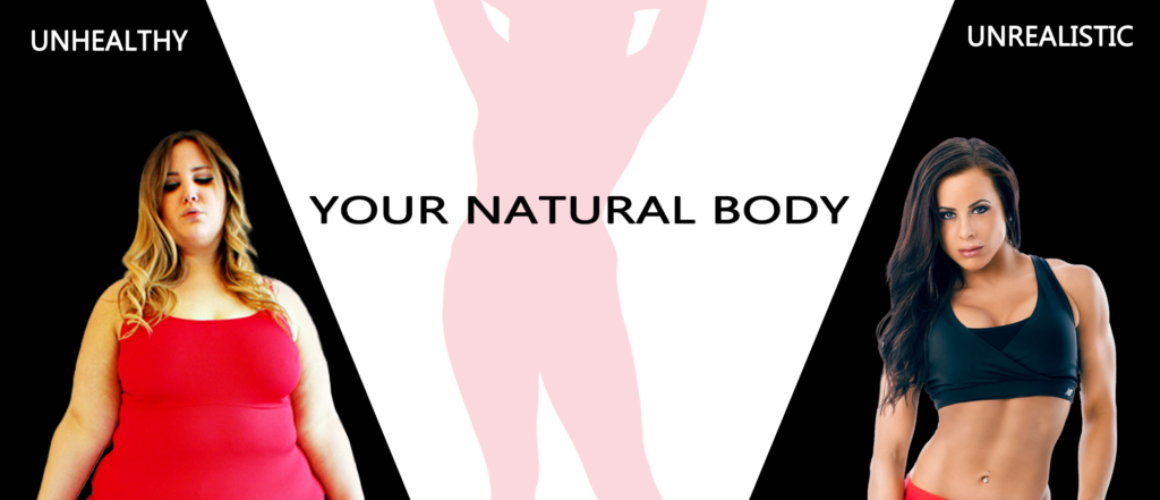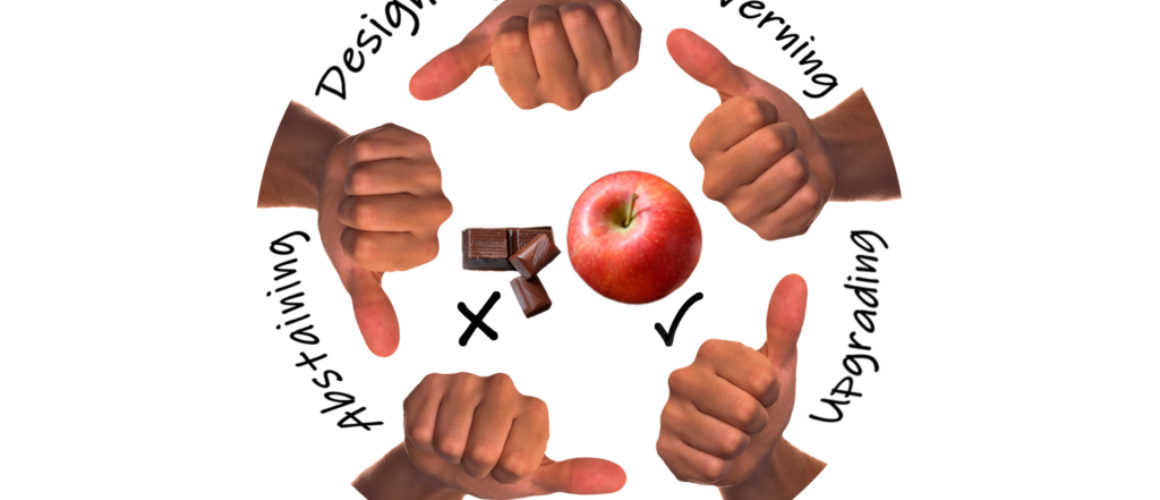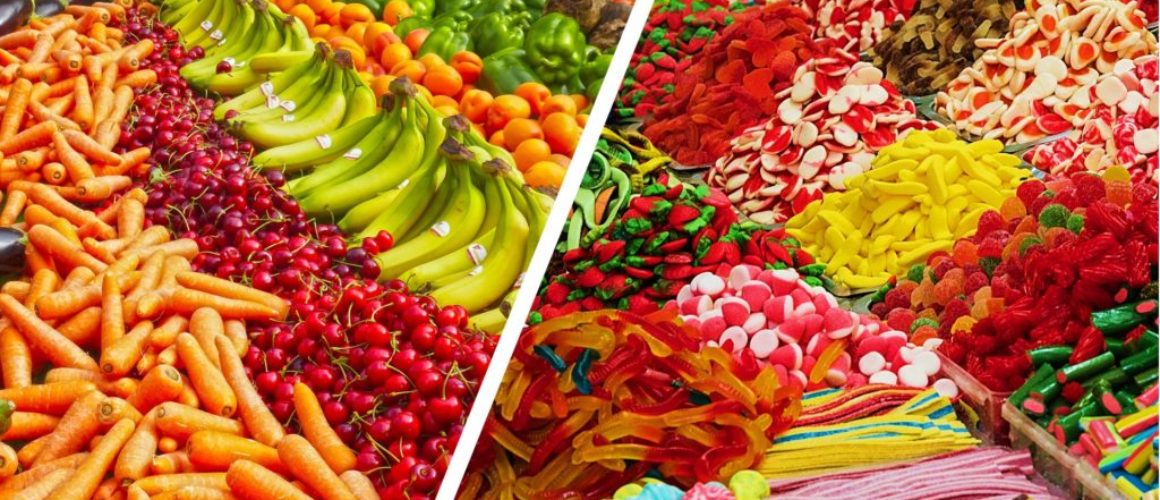You Never Need to Worry About Your Weight Again
Focus only on your health and trust nature to take care of the rest.

Created by Janet Cloete using Wikimedia Commons images from Muffintopmaria and Cedward Brice.
Are you happy with your weight? If you are, congratulations! You’re part of an elite group. According to this survey, only 2 in 10 Americans are happy with their bodies.
But have you ever wondered why we experience such large social pressures to appear slim and athletic? After all, there are several periods in history where plump bodies were desired, especially for women. Why are these same well-rounded figures stigmatized today?
Keeping Each Other Accountable
My best theory about today’s obesity stigma is that it’s our instinctive attempt to keep each other accountable for contributing to a better society. The societal costs of obesity are enormous, and our world would undoubtedly be a better place if it could be controlled more effectively.
But this way of thinking creates severe problems. For starters, we’ve managed to push the social body standard all the way to the opposite extreme. This unrealistic expectation completely neglects the large space between fitness model standards and obesity that is both healthy and attainable.
We also need to acknowledge that genetics have plenty to say about the shape of our bodies. This article puts the genetic influence on obesity at about 25%, rising to as much as 70–80% for people who really struggle to lose weight.
But our genes have not changed over the past two generations when the obesity epidemic started running rampant. No, the primary driving force behind this epidemic is the ubiquitous availability of addictive empty calories — foods purpose-built to short-circuit the body’s natural satiety response and make us overeat. The omnipresence of these slow poisons is capitalism’s greatest failure and our costliest societal burden.
Hence, we’re stuck in a society that’s obsessed with athletic physiques but surrounds itself with foods designed for overeating. If there was ever a recipe for terrible body-image (and all the associated mental health problems), this is it.
A New Standard
It’s a good thing that we instinctively want to keep each other accountable for reducing the massive societal burden of obesity, but we’re focussing on the wrong issue. Instead of pressuring each other to be thin, we should be actively encouraging each other to maintain a lifelong healthy diet. Bodies should be shaped for health, not for social media.
In this article, I want to give you permission to feel at home in whatever body arises from a genuinely healthy diet. This is your natural weight that you never need to apologize for.
Fueling your body with all the right foods despite society’s constant attempts to addict you to empty calories is a great achievement that should be celebrated, regardless of the number on your scale.
How to Find Your Natural Weight
Your natural weight is the number that arises when you eat as much as you naturally feel like from a varied diet dominated by whole foods.
In other words, you allow your body’s natural satiety response to regulate your calorie intake by 1) removing toxic foods designed to make you overeat and 2) ensuring that all your nutritional needs are met (naturally).
There are three simple guidelines that define such a diet:
- Consume more than 80% of your calories from whole foods. Regularly eat from each of these four categories: 1) nuts, seeds, and berries, 2) cooked and raw veggies, 3) avocado and other fruit, and 4) non-meat proteins (here, mildly processed foods are also OK).
- Eat at least 30 different types of whole foods every day. This is much easier than it sounds.
- Commit to always pay the true cost of the foods you buy. The best way is to use charitable donations for offsetting the societal damages caused by any empty calorie purchases. A good starting point is to give $7 for every 1000 calories of unhealthy food.
Regularly moving your body is important too, but diet comes first. As you approach your natural weight and start noticing much-improved vitality from your healthy, whole-food diet, exercise will follow naturally.
If you stick to these guidelines, you can eat as much as you feel like and be 100% comfortable with the result. Whatever the scale says, you would have given your body every chance to stay healthy and contribute to society.
But be prepared: Transitioning from the Standard American Diet (SAD) to a healthy, whole-food diet can be tough. Empty calories are drugs, and they can be just as hard to quit as smoking. This empty-calorie detox plan can help you through this challenging transition period, one step at a time.
What is Your Natural Weight?
The researcher in me is very curious about the variation in natural weight within the human population. I’m lucky enough that my natural weight is at the optimal point according to the Smart BMI calculator. That means I’m blessed with genes that align my natural weight with societal expectations.
Not everyone will be this lucky, but I would like to believe it’s impossible to become obese on a varied, whole-food diet. When you cut out almost all empty calories, it might even be difficult to become overweight. I could not find any studies that directly test this hypothesis, so I’m very curious to learn more about different people’s natural weights.
If you maintain the kind of diet described above, please share your Smart BMI in the comments below. Also, if you’re currently overweight and commit to a varied, whole-food diet with almost no empty calories, I would love to hear about your progress after a few months!
But whatever the result may be, know that society cannot expect you to change your genetic makeup. To be honest, it can’t even expect you to maintain a perfect diet when it constantly tries to addict you to empty-calorie drugs. Anyone who maintains a varied, whole-food diet under these circumstances is doing society a massive service, regardless of their bodyweight.
For that, I thank you from the bottom of my heart. 😊
Thanks to Alta Cloete.







